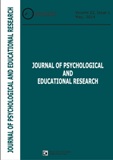Adaptation of Cognitive Style Indicator: Validity and reliability studies of the indicator
Adaptation of Cognitive Style Indicator: Validity and reliability studies of the indicator
Author(s): Selahattin Gelbal , Sevda AslanSubject(s): Psychology
Published by: Editura Universitatii din Oradea
Keywords: Cognitive Style Indicator; university students; knowing; planning; creating
Summary/Abstract: Cognitive Style Indicator (COSI) is a scale developed by Cools and Van den Broeck (2007) which evaluates cognitive style in university students. COSI is a five-point Likert-type scale consisting of 3 cognitive styles and 18 items. COSI cognitive styles are as follows: Knowing, planning, and creating. The aim of this study was to determine the validity and reliability of the university students. The study was conducted on 1851 university students. 1035 female and 816 male students participated in the study. The sampling group consisted of 1851 1st- 4th year students studying at 63 universities during the fall 2012-2013 academic year. However, the data gathered from 331 respondents were excluded from the analysis due to incorrect or missing marking; therefore, the analysis was conducted using a 1520-person data set. The number of female students participating in the study was 885 and the number of male students participating in the study was 635. In addition, test-retest reliability method and internal consistency Analysis were used in order to evaluate the reliability of the scale. As a result of the factor analysis study, the COSI consisted of 18 items and 3 factors (knowing, planning, and creating). Exploratory and confirmatory factor analyses were carried out in order to test the construct validity of the scale. It was found that the Cronbach Alpha of the knowing, planning and creating were respectively 0.72, 0.77 and 0.80, and test-retest coefficients of the knowing, planning and creating were respectively 0.83, 0.87 and 0.93. Study findings revealed that this measurement tool can be used for Turkish university students as both a reliable and valid one.
Journal: Journal of Psychological and Educational Research (JPER)
- Issue Year: XXII/2014
- Issue No: 1
- Page Range: 16-25
- Page Count: 10
- Language: English

